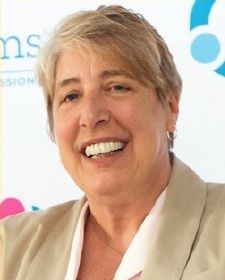Parents’ Powerful Role in Communication Development
August 01, 2016
By: Joanne Gerenser
Categories: Message

Deficits in speech, language, and communication are common in children with autism. The range of these challenges varies widely from failing to develop speech at all to having a large expressive vocabulary but not communicating effectively. While it is important to seek out the support of a speech-language pathologist, it is even more important to understand the powerful role that you as a parent can play in supporting your child.
There are three main reasons why it is vital that a child be given every opportunity to become an effective communicator. The first is that problem behavior is directly linked to an inability to communicate. That is, if a child does not have the ability to let others know what he or she wants (in an appropriate manner), then problem behaviors become the child’s form of
communication. Second, effective communication skills are essential to independence. If strangers are unable to understand what the child is trying to communicate, it will be difficult when the child grows to adulthood for him or her to transition to new environments, get a job, or interact in the community. Last, being unable to communicate often leads to frustration and isolation.
As a parent, you are the person who knows your child the best—his or her likes, dislikes, routines, and so on. You spend hours and hours each day with your child while a speech-language pathologist spends a half an hour a day with your child at most.
That is why it is essential for parents to understand how to best use the time they spend with their child to help promote their child’s communication. There are many resources that provide strategies for helping their child develop speech and language available to parents. See the links at the end of this article for a few of those resources.
What is most important is that you should not give your child anything for free. In other words, he or she must make an effort to communicate at all times. You must pay close attention to the many naturally occurring opportunities to model desired behavior as well as reinforce independent attempts to communicate. In addition to the naturally occurring situations, you can also set some up. For example:
The more opportunities your child has to practice effective communication, the more likely he or she will be successful.
It is a fine balance between expecting just a little bit more from your child to expecting too much. It is important to know what your child is capable of and avoid pushing too far. What’s most important is that your child becomes successful at
communicating with others. If you expect him or her to do things that are out of his or her range, then communication might become unpleasant and something he or she would avoid.
One last point to consider is whether you should supplement your child’s communication with some form of augmentative system, such as a picture board, PECS, sign language, or a device. Parents often fear that, if they give their child an augmentative system, it will reduce the likelihood that speech will develop. The research is very clear that this is not true. Most research supports the fact that augmentative systems actually can help promote speech development. What is most important is that your child has a way of effectively letting people know what he or she wants.
Don’t underestimate the role you, the parent, can play in helping to support the development of speech, language, and communication. It can start by just expecting your child to look at you when he or she wants something and then it grows from there. Communicating doesn’t come naturally for many children with autism but it can certainly be learned. While there is still disagreement as to the best treatment approach for children with ASD and the amount of treatment hours, there is one thing that everyone can agree on, regardless of treatment ideology: Children do better when parents are active partners in the intervention.
 Joanne Gerenser, Ph.D., CCC-SLP, is the executive director of the Eden II Programs in Staten Island, N.Y. and a member of OAR’s Scientific Advisory Council. In addition, she is president of the board of the Council Autism Service Providers. Dr. Gerenser has presented on topics in autism and related disorders at local, national, and international conferences. She is the co-author of Behavioral Programming for Children with Autism, an interactive CD-ROM as well as several articles and book chapters.
Joanne Gerenser, Ph.D., CCC-SLP, is the executive director of the Eden II Programs in Staten Island, N.Y. and a member of OAR’s Scientific Advisory Council. In addition, she is president of the board of the Council Autism Service Providers. Dr. Gerenser has presented on topics in autism and related disorders at local, national, and international conferences. She is the co-author of Behavioral Programming for Children with Autism, an interactive CD-ROM as well as several articles and book chapters.